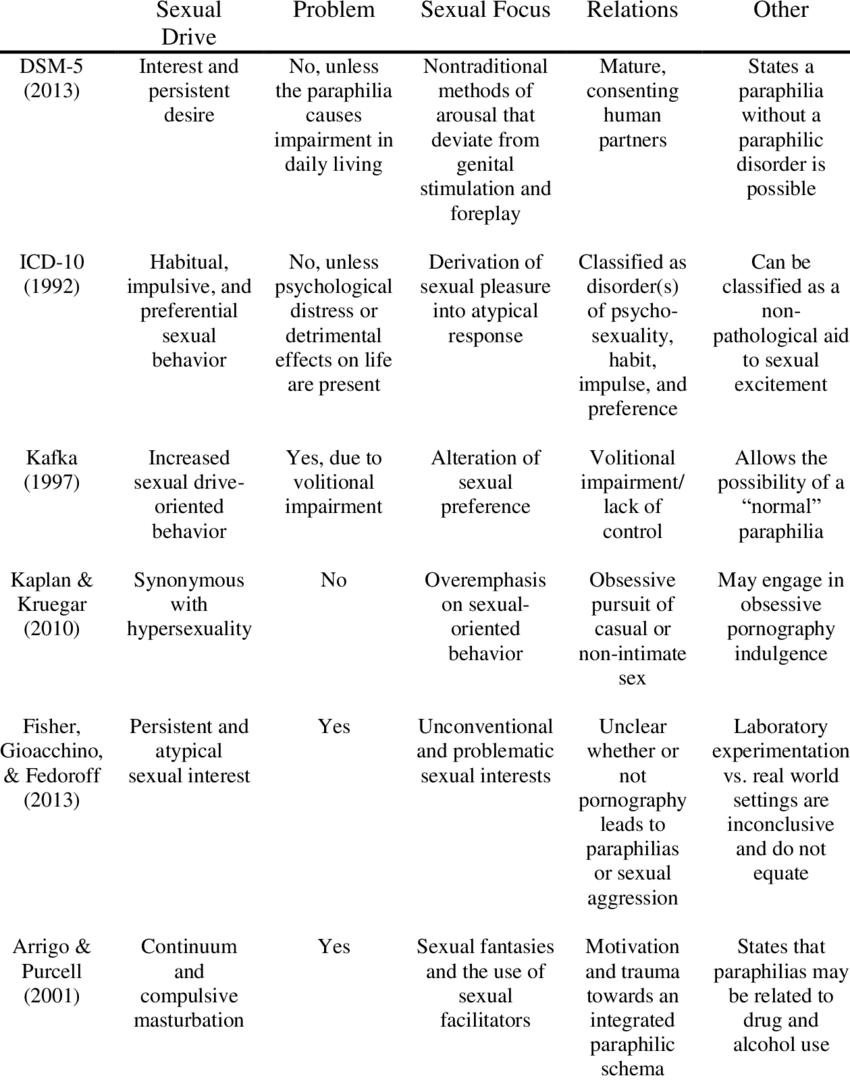What are paraphilia really? They can be defined, like Belloch, as a sexual orientation towards unusual objects or situations in relation to the conventional pattern and are characterized by intense and repeated fantasies, impulses or sexual behaviors that often involve non-human objects, suffering or humiliation in their own, of their partner, children or people who do not consent in the act.
To clarify this terminology, we need to know where the word paraphilia comes from. The root? Stop-? Means?Apart from? And who besides?For? It has its origin in Greek, it means ‘love’. Therefore, we can understand paraphilia as “outside of love”, anything that departs from what is commonly known or established as “normal”.
- But what excites and escapes what is established as socially normal paraphilia?Advances in diagnostic manuals have differentiated paraphilia from paraphilic disorders.
- So paraphilic disorder is what excites.
- But also causes discomfort.
- Personal injury or risk of harm to others.
- Intense and persistent sexual interest in something that defloates from normal social norms.
- Something atypical.
- But does not involve discomfort or prejudice.
Just as there may be phobias (fear of) everything we know, affiliates (love for) can also address the same things. Some sources indicate that there are about 550 types of paraphilia, such as attraction to animals (bestiality), attraction to the dead (necrophilia), sexual arousal with faeces (coprophilia), etc.
In the most common paraphilias we find voyerism, which would be the excitement of observing a person without them noticing while naked or having sex. Another line often seen is exhibitionism, a sexual attraction that involves showing the genitals to a person by surprise.
Among other common paraphilias, we highlight rubbing, which would be the feeling of excitement when rubbing another person’s genitalia without their consent or, for example, masochism and sexual sadism, which would be to find pleasure in the pain and suffering of oneself or the other. Fetishism is perhaps the best known paraphilia and can be defined as the arousal of inanimate objects or parts of the body other than the genitals, such as the feet.
We must not forget that we are talking about paraphilia when there is no harm to ourselves or others, it does not cause shame, it does not exceed the limits of consent and agreement between those who practice these acts, when the opposite happens, we are talking about paraphilic disorders.
Paraphilias usually begin in adolescence, when early sexual encounters usually occur and we begin to discover the body and what excites us, it was thought that only men could have paraphilia, but today, although they are much less common, since 85% appear in In men, paraphilia can also be found in women , especially masochism, which is the most common paraphilia in women.
By knowing a little more about paraphilia we can understand that everyone can get excited about one thing or another depending on their history, their learning, depending on what has had contact in life, or sometimes, even without knowing why, we find pleasure and emotion in different things. Tastes, like people, are unique.
We must understand that everything that does not submit or cause suffering to anyone is free and for everyone, if we respect this we can find pleasure in everything that surrounds us and have a life of unlimited sex, sexuality is not discussed and if we free ourselves and let go , we can always discover new forms of pleasure that satisfy us.

